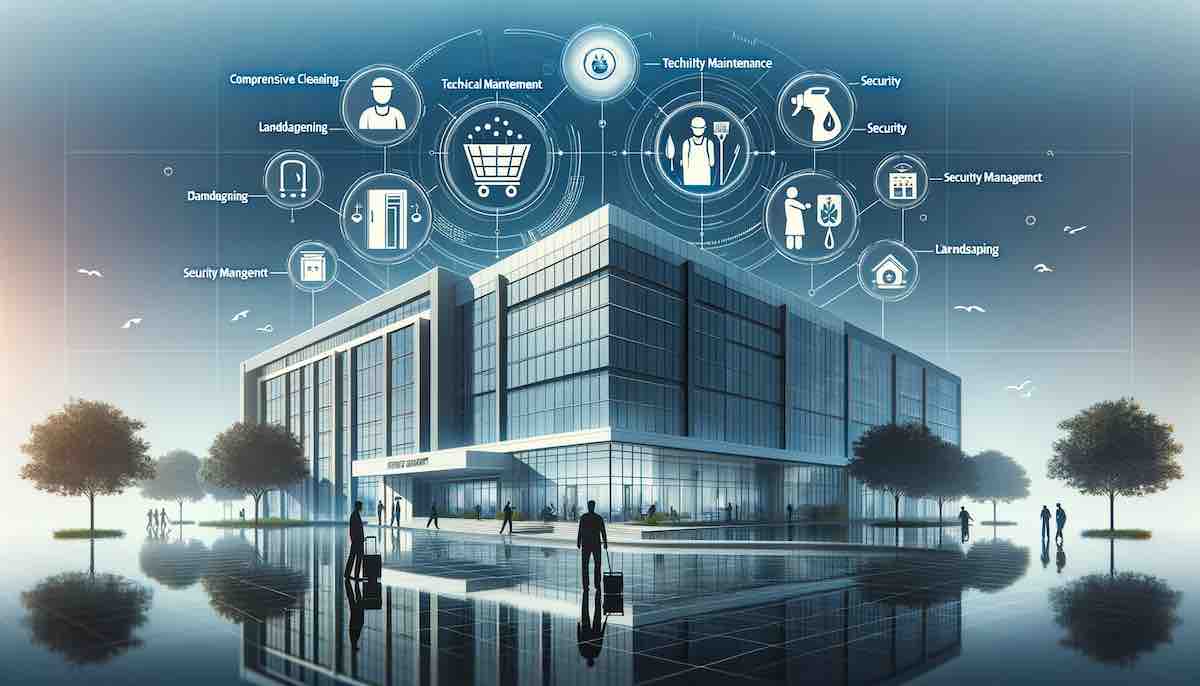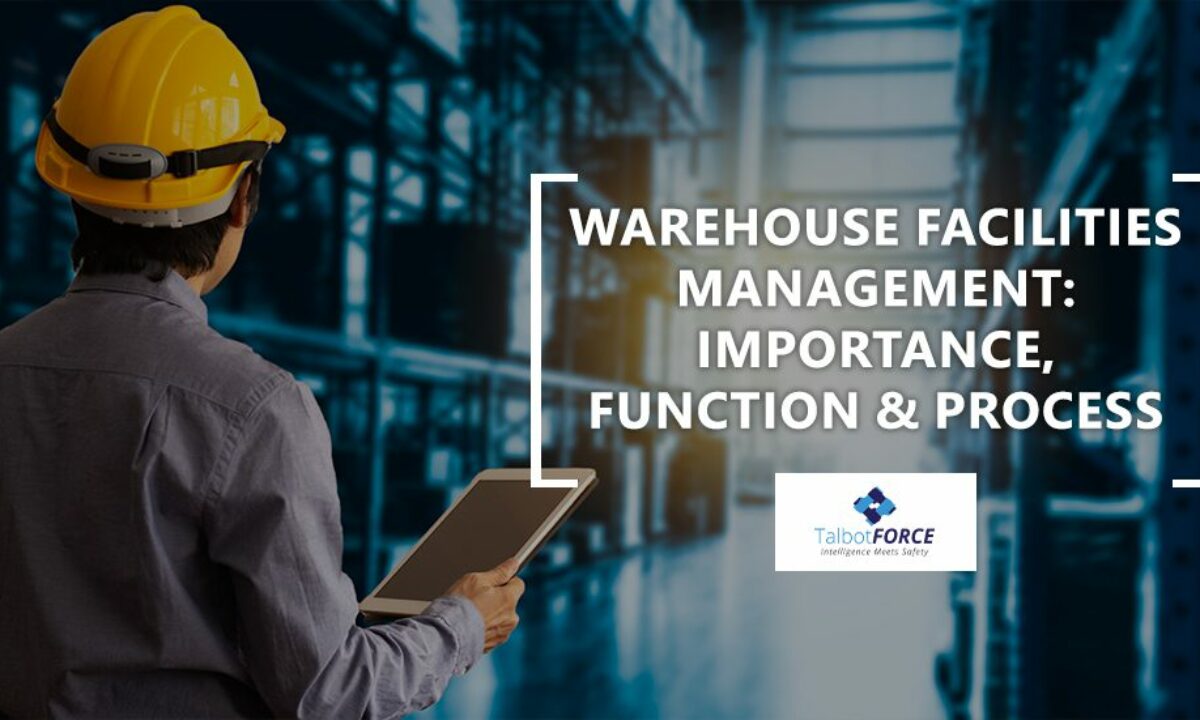Understanding the Crucial Principles of Facility Management for Modern Services
Understanding the Crucial Principles of Facility Management for Modern Services
Blog Article
The Vital Overview to Facility Administration: Techniques for Success
Center management plays an important function in the overall success of an organization, serving as the backbone that supports safety and security, efficiency, and effectiveness. The subtleties of reliable center administration prolong past simple logistics and need a detailed understanding of both qualitative and quantitative metrics.
Comprehending Facility Management
What comprises reliable center administration? Effective facility administration includes the sychronisation of various organizational features to ensure that constructed atmospheres are risk-free, effective, and helpful to efficiency. Facility Management. It integrates the concepts of company, engineering, and architecture monitoring to produce a seamless functional circulation within an organization
Crucial element of facility management consist of area planning, upkeep administration, and compliance with health and wellness guidelines. Area preparation concentrates on enhancing making use of physical resources to support organizational goals, while upkeep monitoring makes sure that facilities are kept in optimum condition, making the most of life-span and reducing functional expenses. Conformity with governing and lawful requirements is crucial, as it safeguards the organization versus potential liabilities and improves its track record.
Additionally, efficient center management relies upon the calculated use technology, such as Building Administration Systems (BMS) and Computer-Aided Center Monitoring (CAFM) devices. These technologies assist in real-time monitoring of building systems and improve maintenance processes. Ultimately, a detailed technique to center monitoring not just advertises functional performance yet also cultivates a favorable atmosphere for visitors and employees alike, driving overall organizational success.
Key Methods for Optimization
Maximizing center administration needs a tactical method that aligns functional experiment business purposes. To attain this, the initial crucial technique is the application of incorporated technological services. Utilizing sophisticated software program systems permits real-time monitoring of center procedures, facilitating data-driven decision-making and improving total effectiveness.
Secondly, routine evaluations of center efficiency are vital. Carrying out regular evaluations and audits enables center managers to identify locations that need improvement, making certain that sources are alloted successfully. This proactive technique helps in decreasing downtime and enhancing solution delivery.
One more crucial strategy is promoting cooperation across divisions. By motivating open interaction in between teams, center managers can better straighten their methods with business goals, bring about enhanced functional harmony. Additionally, involving team in training programs advertises a society of liability and boosts their ability to add to optimization efforts.
Enhancing Safety And Security Procedures
Enhancing safety and security methods is important for producing a safe and secure setting within facilities. An extensive safety and security procedure not only protects visitors and staff members yet additionally enhances operational efficiency. To accomplish this, facility managers should conduct routine danger evaluations to determine potential dangers and make sure that proper procedures are in location.
Educating and education and learning are crucial components of effective safety and security protocols - Facility Management. Workers ought to receive ongoing training in emergency procedures, equipment handling, and personal safety procedures. Regular drills, such as fire look what i found evacuations or lockdown treatments, foster knowledge and preparedness amongst team
Furthermore, clear communication networks have to be developed to report safety worries quickly. This includes creating an accessible system for workers to voice possible dangers or incidents without anxiety of reprisal. Leveraging technology can boost safety actions; for example, executing surveillance systems and gain access to controls aids keep track of facility tasks and restrict unauthorized access.
Lastly, conformity with regional laws and industry requirements is non-negotiable. Regular audits and testimonials of security methods ensure alignment with current legislations and ideal practices. By prioritizing these strategies, center supervisors can cultivate a culture of safety that safeguards all stakeholders and inevitably contributes to the organization's success.
Improving Workplace Environment

Ergonomic considerations are necessary to decrease physical stress and pain. Facility Management. This entails giving flexible furnishings, correct lighting, and see this here ample area for motion. These adjustments can cause decreased absence and raised job complete satisfaction
Appearances play an essential duty fit the office ambience. Using color psychology, all-natural lights, and plant can cultivate a stimulating and inviting atmosphere. Thoughtfully designed rooms can enhance creativity and improve total wellness.
Furthermore, encouraging worker interaction through comprehensive decision-making processes can enhance the feeling of ownership and belonging. Collecting comments on workplace renovations and involving employees in the layout process can bring about a much more customized atmosphere that meets their demands.
Lastly, promoting wellness campaigns, such as wellness programs and leisure areas, can additionally add to a supportive office culture. By concentrating on these approaches, center supervisors can successfully improve the workplace atmosphere, driving both worker fulfillment and organizational success.
Measuring Success in Facilities
Measuring success in facility administration needs a comprehensive method that assesses both quantitative and qualitative metrics. Measurable metrics generally consist of crucial resource efficiency indicators (KPIs) such as space use rates, energy intake, upkeep costs, and occupancy degrees. These metrics give a clear photo of operational effectiveness and economic performance, permitting center supervisors to determine areas for renovation and criteria against market criteria.
Qualitative metrics, on the other hand, emphasis on individual contentment and employee engagement. Surveys and comments systems can assess just how well the facilities satisfy the demands of owners, helping to assess the total workplace environment. This aspect is important, as a pleased workforce is typically linked to boosted productivity and retention rates.
To successfully gauge success, center supervisors ought to also take into consideration integrating technology, such as constructing monitoring systems and information analytics devices, to collect and analyze pertinent information. On a regular basis reviewing both sets of metrics permits an extra well balanced view of efficiency and informs strategic choices. Eventually, a successful center management strategy pivots on a commitment to continual enhancement, ensuring that both functional effectiveness and customer fulfillment are prioritized.
Final Thought

Facility monitoring plays an essential role in the general success of a company, offering as the backbone that sustains productivity, effectiveness, and security.Trick aspects of center monitoring consist of room preparation, upkeep monitoring, and conformity with wellness and safety and security regulations.Additionally, reliable facility monitoring counts on the strategic use of innovation, such as Structure Monitoring Equipment (BMS) and Computer-Aided Center Administration (CAFM) tools. Ultimately, an extensive method to facility administration not only advertises functional effectiveness however likewise fosters a favorable setting for visitors and employees alike, driving total organizational success.
Eventually, a successful center administration technique hinges on a commitment to continuous improvement, making certain that both functional efficiencies and customer complete satisfaction are prioritized.
Report this page